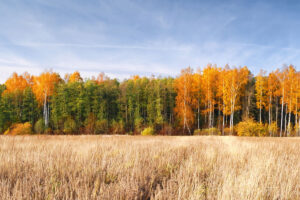On Monday, December 13th, an amusing investment article appeared online. Entitled “5 Experts: where to invest in 2011” – the “experts” cited in this Fortune article offered up a most obscure, milk-toast recipe for building wealth. Using generic phrases such as “global investors, emerging markets, labor costs, debt and the asset bubble, and asset-class synchronicity”, they seemed to be teaching an entry-level college economics course – rather than giving specifics about where to invest.
One comment went like this: “Gold is close to $1,400 per ounce. Is it a good buy at that price?” One of the five “experts” replied “We have no view on the future direction of the price of gold.” Really? Considering that gold hit a low just under $300 per ounce in 2001, and reached a high of $1,415 on December 13th, it would seem that buying gold today is akin to following the “Buy High – Sell Low” theory being pushed on TV by gold companies.
So… what else did the experts advise for 2011? Their comments included:
- There’s downside risk with fixed-income
- Look at asset-class synchronicity
- The whole world isn’t decoupling
- Look at debt and the asset bubble
- You can get totally lopsided in commodities and equities
- Is it a bubble or not a bubble in Treasuries?
- I take the group-hug approach…when investing in financials
- …eat more meat, chicken, beef and pork…creates more demand for grain
- All the flows we see are into bond funds
OK – you get the drift of this informative group professing to give you great investment advice for 2011. Now let’s take a look at the real world of dollars and cents – the one that’s called “Buy Low – Sell High!”
The so-called experts left out the most tangible, durable, risk-free, and always marketable asset – LAND. That’s right – plain old raw land. Think about it – you can buy it, sell it, bequeath it, give it away, borrow against it, play on it, improve it, live on it, earn income from it, or just watch it appreciate while you sleep. Best of all, it doesn’t call you in the middle of the night to say it’s disappeared or gone bankrupt.
So… how do you invest in land? First and foremost, you “buy low – sell high. In other words you make your money when you buy – not when you sell. Why? When you’re buying, there are always properties priced below fair market value. It’s your job to find them.
Because most raw land is owned by individuals, the reasons for selling are as diverse as their personalities. All are selling because of some change in their circumstances, i.e. they’re short of cash, they’re moving to another state, they can’t pay their mortgage, experiencing a divorce, or motivated by a death in the family. The price they ask is based on personal need, more than some fancy business formula. It’s up to you to determine which property offers the most value, yet is priced at the low end of the food chain.
Often, the ones priced lowest per acre are also the ones owned by sellers with the most pressing motivations. They’re also the owners with the most emotion attached to their motivation to sell. Thus, it’s best to make your offer to purchase through their agent, not directly with a “by owner”. Keep it businesslike, yet cordial – and leave emotion out of your buying equation.
As an aside, by making a low offer on a property whose seller is under pressure to move the property, you are not taking advantage of them – you are actually helping to solve their problem at the same time you are making a profitable purchase. The circumstances that caused them to sell and their price are solely theirs – you didn’t cause their circumstances. By purchasing their property, you actually relieved their pressure, making it a win-win transaction.
Finally, the reason for buying below fair market value is because it is rarely possible to sell for more than fair market. Buyers recognize properties priced above the market, and will walk away. On the other hand, there are always properties priced below the market, as cited above. By buying below the market, and later selling at “fair value” – a tidy profit is assured.
Oh – one more thing. Don’t get attached to the properties you buy. Remember, you’rebuying them to build wealth, not for “bragging rights” to show off to your family andfriends. The ugliest, most poorly located land parcels may be the most profitable.
Want to be financially independent? Get out and start digging for land!
This content may not be used or reproduced in any manner whatsoever, in part or in whole, without written permission of LANDTHINK. Use of this content without permission is a violation of federal copyright law. The articles, posts, comments, opinions and information provided by LANDTHINK are for informational and research purposes only and DOES NOT substitute or coincide with the advice of an attorney, accountant, real estate broker or any other licensed real estate professional. LANDTHINK strongly advises visitors and readers to seek their own professional guidance and advice related to buying, investing in or selling real estate.










Your article provides another example of good old hands on experience and locally developed knowledge trumping the “experts” hi-falutin prognostications. As a Land Broker in Tucson since 1993, I agree with everything you’ve said. I would add in our market, many of the available, below market properties are Bank Owned. When dealing with these, the timing of when you make an offer is very important as many lender’s have a systematic way to lower their prices over time. It can pay to intentially delay your bid for 30 or 60 days rather than be the first offer in when a parcel comes to market.